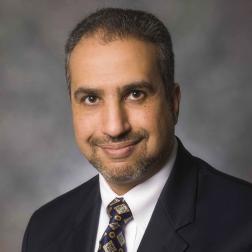“Islamic Finance” After State-sponsored Capitalist Islamism

Table of Contents
Author(s)
To access the full paper, download the PDF on the left-hand sidebar.
Abstract
During the late part of the nineteenth century CE, nationalist-Islamism emerged as a theology of liberation from the realities of European colonialism under which most Muslims lived. This form of Islamism survived into the mid twentieth century, without significant thought being lent to the possibility or desirability of a so-called “Islamic finance.” Indeed, juristic developments during this period justified conventional financial practices, and many nationalist movements aimed merely to replace European financial institutions with indigenous ones focused on boosting domestic and regional economic development. Shortly after independence, and under the influence of global currents, the liberation theology of nationalist-Islamism mutated into a socialist-Islamism that focused on self reliance to defeat poverty and continued economic dependence of Muslim-majority countries.
To counter this theology that threatened their regimes, oil monarchies used their relatively limited petrodollar resources to promote a religious-identity form of pan-Islamism based on the incoherent mid-century thought of Mawdudi and his followers. Then, starting in the 1970s, ample petrodollar flows, and their recycling, fueled a state-sponsored capitalist-Islamism that included adoption of this incoherent mid-century thought into a so-called “Islamic finance” industry. The rise of this industry may thus be attributed to four forces: (i) governments seeking to appease Islamist sentiments in areas that did not threaten their post-colonial timocracies; (ii) emerging middle classes who favor formulaic religious-identity Islamism, and simultaneously seek to join the upper (increasingly financial and legal) rungs of society; (iii) advances in financial engineering that made it easy to replicate contemporary financial practices using medieval contracts; and (iv) recycling of petrodollars from Muslim economies with limited absorptive capacity. The last two forces created the methods and funds to power so-called “Islamic finance,” while the first two provided advantages and space for its personnel and client-base.
As the petrodollar age and its concomitant brand of capitalist-Islamism come to an end, Muslim middle classes and timocracies retain the incentives to sustain the fiction that powers this industry. However, the impending demise of petrodollar-supported capitalist-Islamism, failures of which begat twenty first century terrorist-Islamism, incentivizes them to find another outlet for Muslim liberation theology. This amplifies manifold the risks (and potential, but limited, benefits) of “Islamic finance.”
This material may be quoted or reproduced without prior permission, provided appropriate credit is given to the author and Rice University’s Baker Institute for Public Policy. The views expressed herein are those of the individual author(s), and do not necessarily represent the views of Rice University’s Baker Institute for Public Policy.



